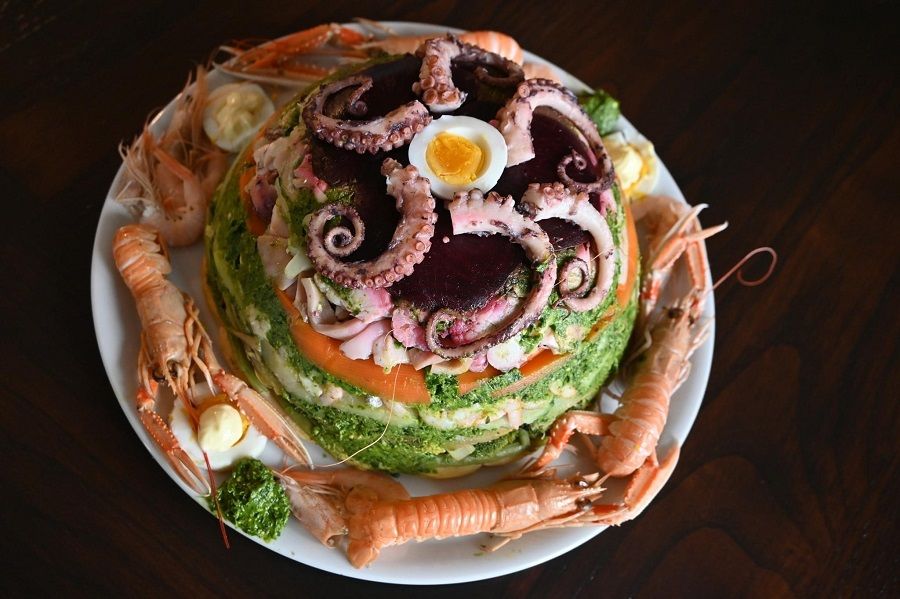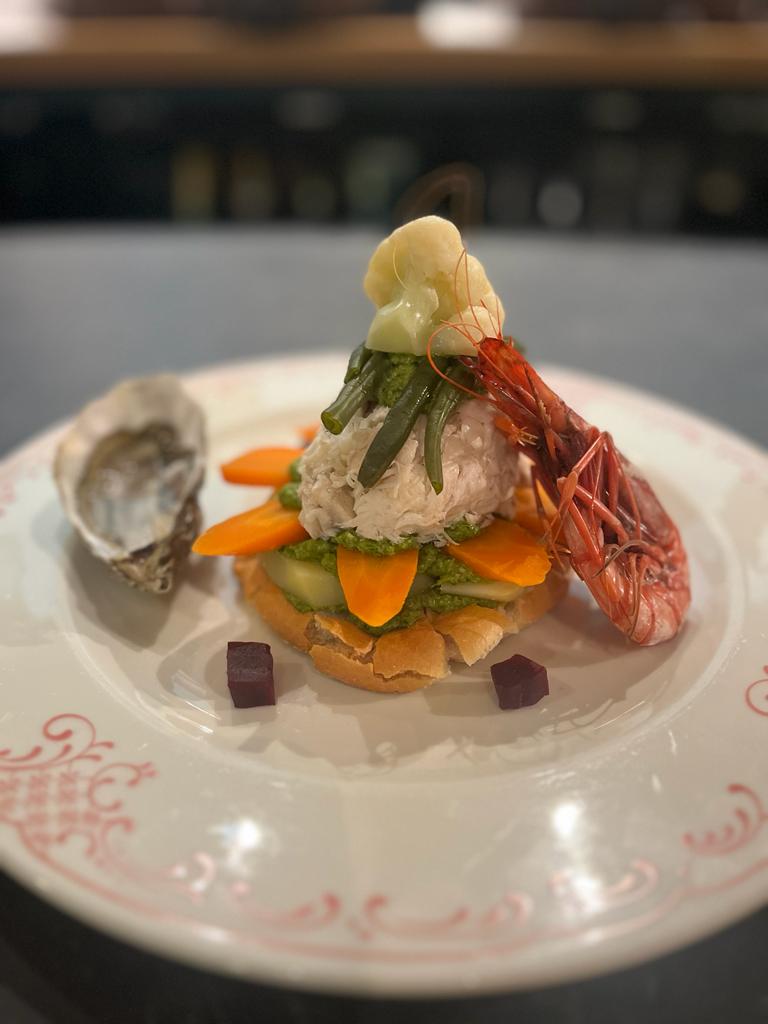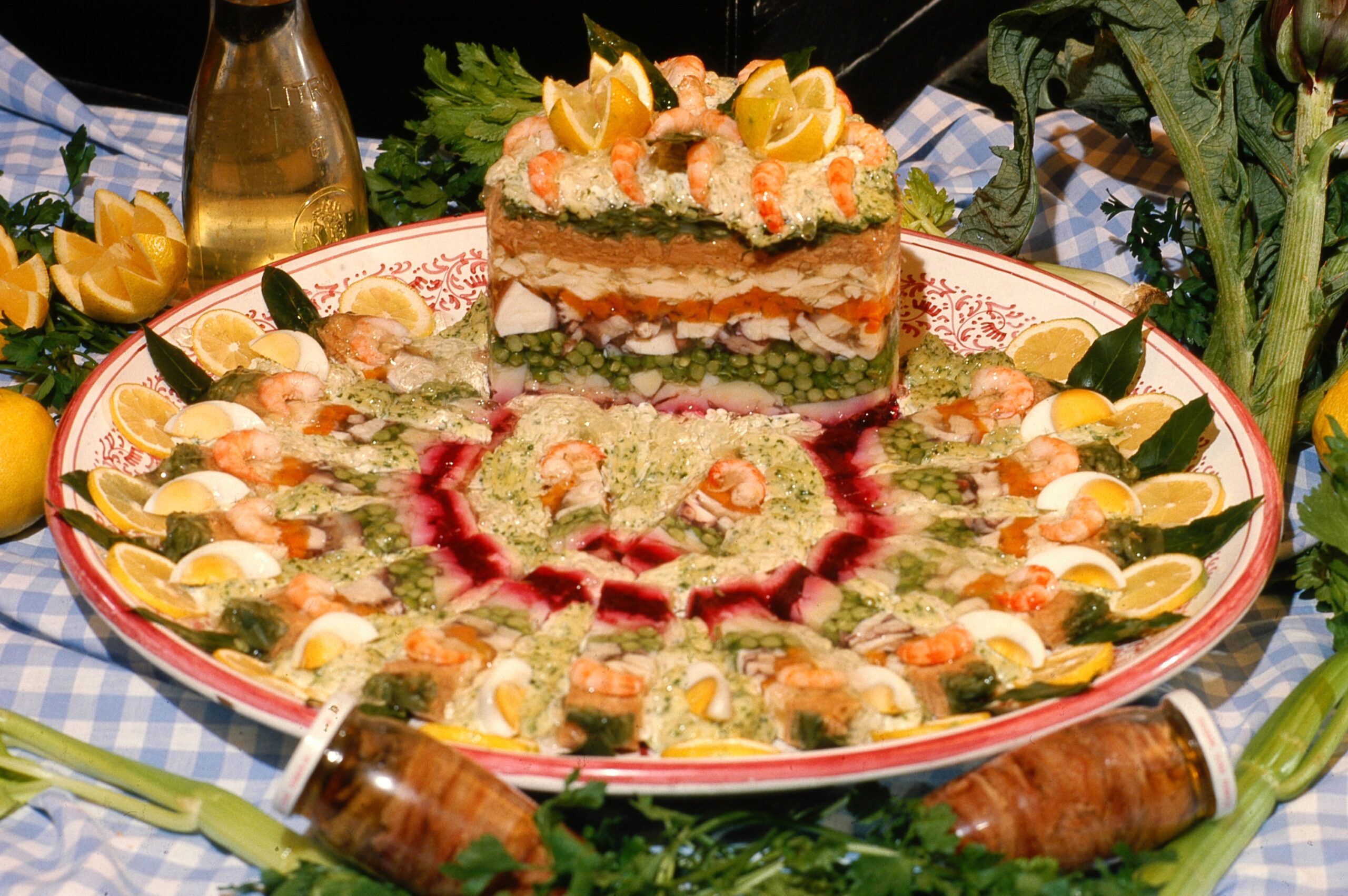The majestic flavour of Cappon Magro

In the majestic flavour of Cappon Magro, one can find the essence of all of Liguria. This dish is a triumph of Ligurian cuisine and ingenuity, evolving from its humble origins to the lavish presentations by great Genoese chefs. Cappon Magro artfully combines land-based products,
such as vegetables, with those from the sea, including fish and shellfish. This creates a harmonious blend of taste and colour that symbolises this sometimes stingy land nestled between mountains and sea.
Originating in ancient times, Cappon Magro started as a simple dish, often prepared on ships or in the kitchens of nobility where leftover banquet food was repurposed. In both cases, the idea was to utilise leftover fish from soup, adding vegetables to create a satisfying meal. During economically difficult periods, characterised by famines, this dish replaced the original, more expensive capon. Its name likely derives from this historical context or from the French term “chapon,” which refers to a slice of toasted bread rubbed with garlic and used in soups.

The dish’s sumptuous appearance evokes a rebirth during the Baroque period, when abundance reigned in the kitchen and extravagance required a stunning presentation. Traditionally served during Lent, it cleverly masks the austerity dictated by the Church through the use of fish, while the richness of its ingredients and beautiful form are far from a sacrifice for the pious diner who abstains from consuming meat.
Today, Cappon Magro is considered the prince and pinnacle of Ligurian gastronomy, reserved for grand ceremonies and not only during
the pre-Easter period but also at Christmas dinners and New Year’s Eve celebrations.
To prepare this dish, start by gathering the ingredients. You will need four sailor’s biscuits, 800 grams of fish such as hake, bass, or dorade, one lobster, twelve shrimp, six oysters, fifty grams of dried tuna (mosciamme), 200 grams of shellfish of your choice, one lemon, vinegar, extra virgin olive oil, and salt. Additionally, you’ll need one small cauliflower, one beetroot, four artichokes, three salsify roots, one white celery, two carrots, 300 grams of green beans, two or three potatoes, radishes, and one tablespoon of pickled mushrooms.
For the sauce, gather a handful of capers, twenty grams of pine nuts, two salted anchovies, two cloves of garlic, two hard-boiled egg yolks, one bunch of parsley, one roll (only the crumb), one tablespoon of green Spanish olives, one glass of extra virgin olive oil, and salt to taste. Begin by cleaning all the vegetables and boiling them separately. Once cooked, peel and slice the potatoes, beetroot, carrots, and the bottoms of the artichokes. The remaining vegetables should be cut into pieces. Dress all the vegetables with oil, vinegar, and salt, and set them aside separately.
Meanwhile, clean and boil the fish in water with aromatic herbs. Once cooked, remove the skin and bones, cut it into pieces, and season with oil, lemon juice, and a pinch of salt. Do the same with the lobster, trying to maintain its original shape as much as possible. Boil the shrimp and keep them whole; there’s a version that calls for fried shrimp. Open the oysters and other shellfish.
Boil the eggs until hard. For ease of preparation, arrange the dried tuna sliced thinly, the salted anchovies (deboned), olives, capers, and mushrooms on separate plates. In a mortar, combine the parsley, garlic, pine nuts, capers, anchovies, and two egg yolks, along with the soaked bread crumb and a pinch of salt. Crush (or blend) the mixture until creamy, then strain and dilute it with a glass of oil and half a glass of vinegar.
To assemble the dish, place the sailor’s biscuits on a serving platter, rub them with garlic, moisten with a splash of water and vinegar, and sprinkle with a pinch of salt before drizzling with oil. Begin layering the vegetables and fish on the biscuits, alternating with the sauce. There is no strict order for arranging the ingredients; instead, it’s about stacking them in a way that creates a colourful display of flavours. The tower should have a wider base and be topped with the lobster in its lovely shape, surrounded by shrimp, which can be skewered for an elegant presentation. All around the Cappon Magro, you can arrange sliced hard-boiled eggs, shellfish, olives, and any leftover mushrooms to delight the eye.

Feel free to check out the video on YouTube for a visual guide!



